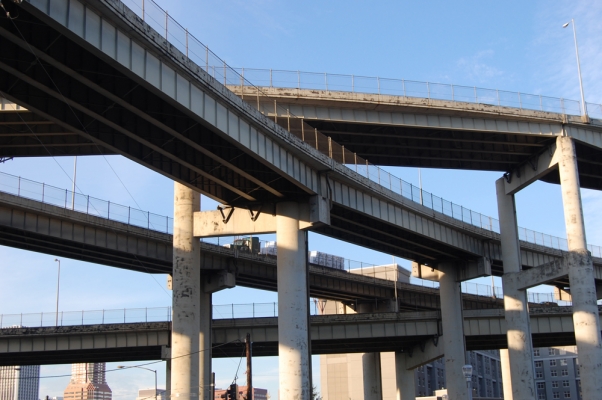Report: Oregon's bridges more vulnerable to earthquakes than expected

It’s not shocking that bridges built without thought to earthquakes wouldn’t make it through a big quake unharmed. More surprising, however, is how much damage even a relatively small earthquake would cause to Oregon’s bridges.
In an exhaustive OTREC project, researcher Peter Dusicka looked at the most common bridge types in the Oregon highway system. Those bridges weren’t just fragile, he found—they were even more fragile than other researchers and technical guidelines had suggested.
Dusicka published his preliminary findings in a draft report last year. The final report, “Bridge Damage Models for Seismic Risk Assessment of Oregon Highway Network,” is out now. Click here to download.
Most Oregon highway bridges were built before the 1980s, when designers started to consider seismic activity. Dusicka set out to see what would happen to the most common bridge type, continuous concrete multi-beam or girder, during quakes of varying degrees.
To find that out, he had to first know how the ground in the Pacific Northwest moves during and earthquake and second, model how the bridge type would react to these motions. Historical and geological evidence show a catastrophic earthquake will occur sooner or later in the region, Dusicka has said, as the Cascadia subduction zone stores up energy that will be released at some point. (Click here to read more about Dusicka’s work regarding subduction zones.)
He collected ground motion data to see what demands a quake would put on bridges and then modeled how much the bridges can take before becoming damaged. The answer: not much. Even low levels of ground motion would cause moderate or extensive damage to bridges. Although it took a larger increase in intensity for bridges to completely fail, extensively damaged bridges would be unsafe and unusable, causing major disruptions to the transportation system.
While these results were more dire than other research had concluded, Dusicka’s research also offered some encouraging news. A retrofit, common in California bridges, would work well for Oregon’s bridges during an earthquake. Wrapping a steel jacket around the bridge column makes the bridge significantly less fragile, making complete bridge failure 46 percent less likely.
The project is “Seismic Damage State Models for Oregon Bridges.”
